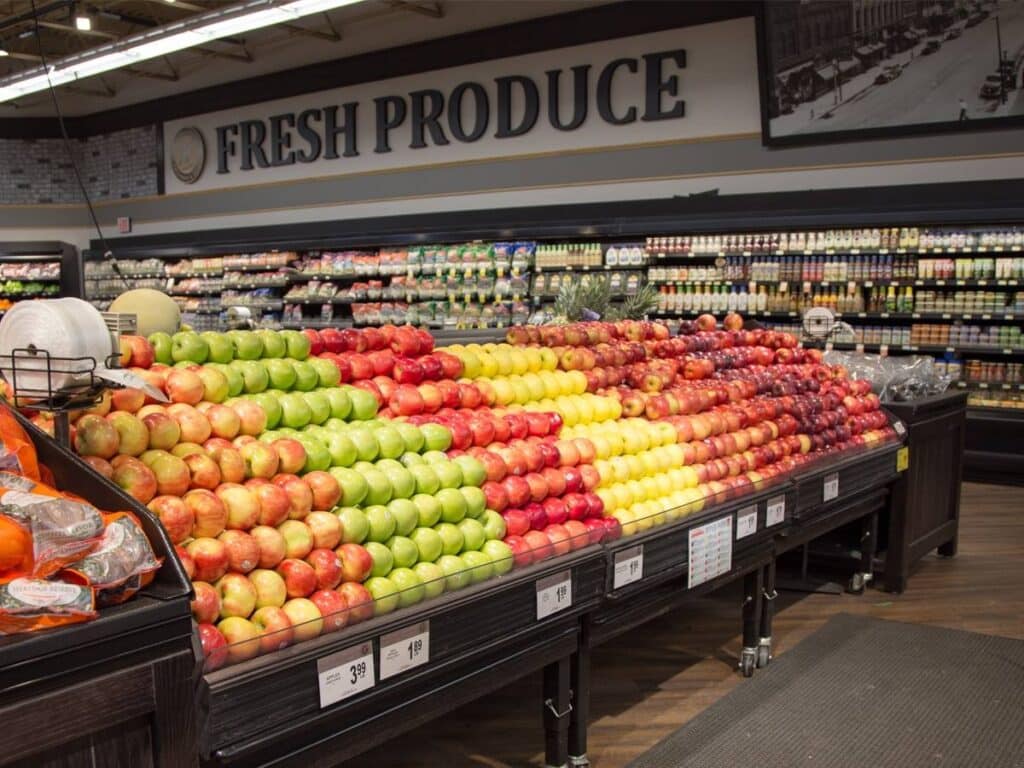
If you like couponing, browsing the latest weekly grocery sales – and you live in a coastal state or the Midwest – you’re in luck. But if you live in, say, North Dakota, then scoring deals on your groceries is a lot harder than it is for your coastal counterparts.
And it’s all because some states simply don’t have enough grocery stores.
The location analytics company Placer.ai recently conducted a state-by-state analysis, and found that large swaths of the country have far fewer grocery shopping options, when more options often means more savings.
“Grocery chains – and visits – are unevenly distributed across the U.S.,” Placer.ai noted. “In some states, grocery chain locations accounted for more than half of visits to food retail chains in early 2024, while in others, discount & dollar stores or superstores dominated the scene.”
There’s nothing particularly wrong with getting your groceries at a superstore like Walmart, or a discount or dollar store. Plenty of places besides traditional chain grocery stores sell food these days, after all. But grocery stores are often where the deals are. Nontraditional “everyday low price” grocery retailers often don’t have sales, and some don’t even accept coupons. So it’s possible for shoppers with limited choices to save money, but not quite to the extent that their sale-seeking, coupon-clipping, big-state counterparts can.
Placer.ai’s concern, however, isn’t so much with deals as it is with access: “With their primary focus on stocking a wide variety of fresh foods,” grocery chains “serve a critical function in offering consumers access to healthy options.”
The report pointed out that, nationwide, grocery chains accounted for 43.4% of visits to retailers that sell food. Oregonians particularly favor traditional grocery retailers – they lead the nation with 59.4% of all food shopping visits taking place at grocery chains. Close behind are Vermont, Washington, Massachusetts and California – all on the East or West coasts.
In contrast, Placer.ai found that “residents of many West North Central and South Central states were much less likely to do their food shopping at grocery chains.” In the aforementioned North Dakota, shoppers bought their food from grocery chains only 11.7% of the time last year. The next fewest grocery chain visits were in Mississippi, Oklahoma and Arkansas, all of which came in under 20%.
Is that because residents of those states simply prefer buying their food at the nearest Walmart or dollar store? Or because many of them just don’t have any other choice?
“Low grocery store visit share does not necessarily indicate a lack of consumer interest or ability to support such stores,” Placer.ai discovered. “In some places, low grocery visit share may be due to inadequate supply, rather than insufficient demand.”
Take Central Alabama, for example. Zooming into that part of the country, Placer.ai’s data found that many shoppers travel a long way, past discount and dollar stores, to get to a grocery chain store. In the small city of Thomasville, more than half of the clientele at a Super Foods grocery store there lives at least ten miles away. And word is getting out, because visits there have increased more than 12% compared to the year before.
Other states with lower-than-average grocery store visits have also experienced growth in the number of visits to the few grocery chains they do have, which “suggests significant untapped potential for grocery stores,” Placer.ai concluded, “and a market that is hungry for more.”
Nationwide, there are many more places to buy groceries than there were more than a decade ago, when a statistician studied a map of the U.S. and found that a lot of people have to drive a long way to buy food for their families. In more than a third of the country, the nearest grocery store was more than ten miles away. In some places, the distance to the nearest full-scale grocery store was as far as 50 miles.
So Placer.ai points out there’s plenty more room for grocery growth – and plenty more willing grocery shoppers. “Even in today’s crowded food retail environment, traditional grocery chains have a special role to play,” the report stated. “For grocery chain operators seeking to expand, these underserved grocery markets can present a significant opportunity.”
No one is suggesting that the entire state of North Dakota is food insecure, or that dinner tables in Oregon are overflowing as though every day is Thanksgiving. But this report aims to bring to light just how stark the disparities can be, in how and where people shop for their everyday needs. Because ultimately, no matter where you live, the desire to have a good grocery shopping experience – and save money in the process – is universal.
Image source: Facebook/Hornbacher’s










